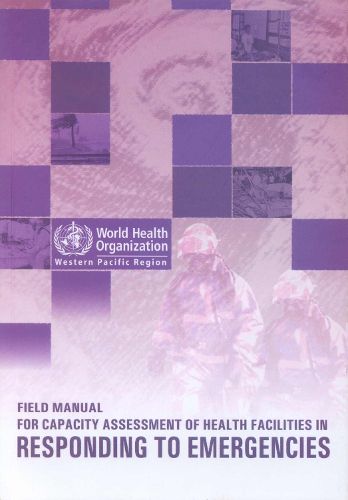Readings Newsletter
Become a Readings Member to make your shopping experience even easier.
Sign in or sign up for free!
You’re not far away from qualifying for FREE standard shipping within Australia
You’ve qualified for FREE standard shipping within Australia
The cart is loading…






This manual serves as an updated second edition to the publication Protocol for assessment of health facilities in responding to emergencies published by WHO in 1999. This updated second edition is a management tool for health professionals evaluating the preparedness of their respective health facilities for dealing with disasters. The needs of professionals who manage health facilities, including national and provincial emergency coordinators and regional emergency focal points were kept in mind during revision of the original manual.
The book is divided into three main parts. The main questionnaire, found in the first part and presented in a checklist format, will provide an overview of the health facility’s present capabilities. The second part, Assessment of general emergency preparedness, deals with aspects of preparedness in any level of emergency. The third part, Assessment of preparedness for specific emergencies, is the major additional to this updated edition. This section tackles specific emergencies that are becoming increasingly relevant. Definitions, evaluation checklists, and relevant case studies are provided whenever possible.
$9.00 standard shipping within Australia
FREE standard shipping within Australia for orders over $100.00
Express & International shipping calculated at checkout
This manual serves as an updated second edition to the publication Protocol for assessment of health facilities in responding to emergencies published by WHO in 1999. This updated second edition is a management tool for health professionals evaluating the preparedness of their respective health facilities for dealing with disasters. The needs of professionals who manage health facilities, including national and provincial emergency coordinators and regional emergency focal points were kept in mind during revision of the original manual.
The book is divided into three main parts. The main questionnaire, found in the first part and presented in a checklist format, will provide an overview of the health facility’s present capabilities. The second part, Assessment of general emergency preparedness, deals with aspects of preparedness in any level of emergency. The third part, Assessment of preparedness for specific emergencies, is the major additional to this updated edition. This section tackles specific emergencies that are becoming increasingly relevant. Definitions, evaluation checklists, and relevant case studies are provided whenever possible.